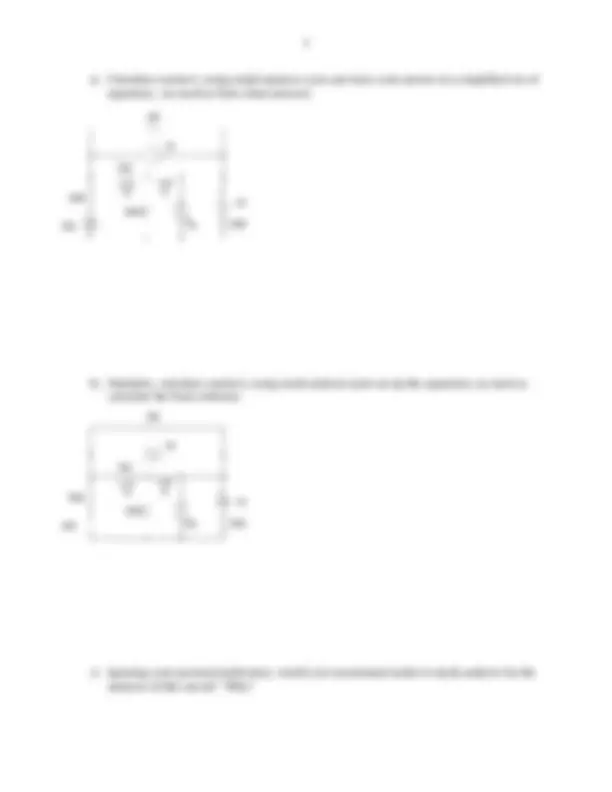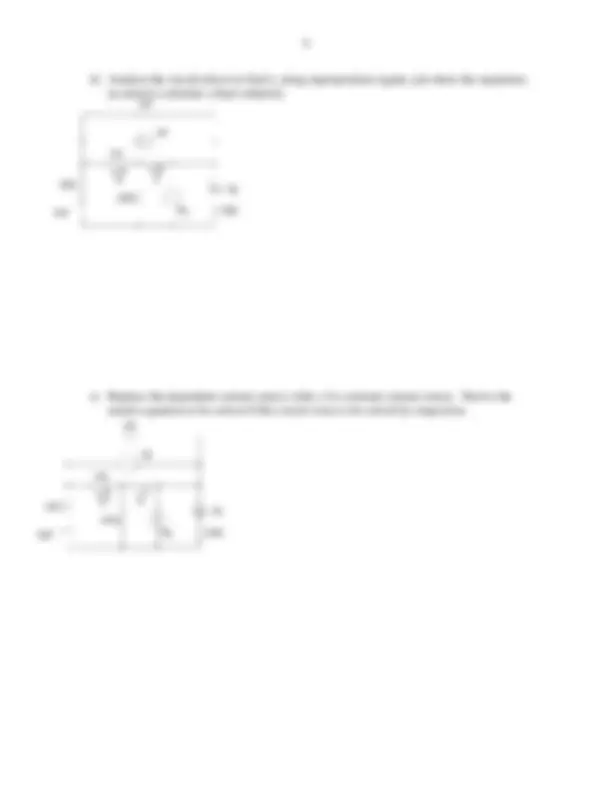




Study with the several resources on Docsity

Earn points by helping other students or get them with a premium plan


Prepare for your exams
Study with the several resources on Docsity

Earn points to download
Earn points by helping other students or get them with a premium plan
Community
Ask the community for help and clear up your study doubts
Discover the best universities in your country according to Docsity users
Free resources
Download our free guides on studying techniques, anxiety management strategies, and thesis advice from Docsity tutors
The questions and instructions for test 1 in the ee42/100 course offered by the university of california, department of electrical engineering and computer sciences. The test covers topics such as resistive voltage dividers, circuit analysis using nodal and mesh analysis, and superposition. Students are required to derive equations, calculate currents, and analyze circuits.
Typology: Exams
1 / 4

This page cannot be seen from the preview
Don't miss anything!



Department of Electrical Engineering and Computer Sciences EE42/100 Fall 2011 Prof. Subramanian Test 1
a) Assuming V (^) in is an ideal voltage source, derive an equation for V (^) out
b) Suppose I wanted to measure the voltage at Vout with a voltmeter.
i) Would I want the voltmeter to have a low or high resistance? Why?
ii) Redraw the circuit above to include the resistance of the voltmeter, and derive an equation for V (^) out as a function of the resistance of the voltmeter.
c) In the above analysis, you have assumed that Vin is an ideal voltage source. Suppose, instead of the voltage source, I use a Norton current source to drive the voltage divider as follows:
Derive an equation for Vout as a function of the various component values above.
d) Analyze the circuit above to find Iy using superposition (again, just show the equations; no need to calculate a final solution).
e) Replace the dependent current source with a 2A constant current source. Derive the matrix equation to be solved if this circuit were to be solved by inspection.